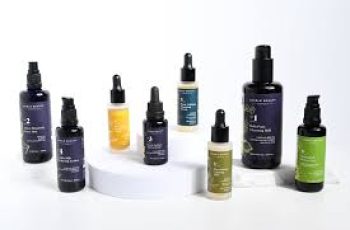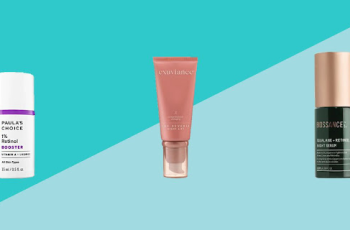
Understanding Botox: Its Mechanism of Action and Treatment Targets
What is Botox?
Botulinum toxin, also known as botulinum toxin type A, is a protein produced by Clostridium botulinum.
When cells in a culture of Clostridium botulinum break down, they release the toxin, which is then purified and processed for medical use.
Botulinum toxin is frequently used in cosmetic procedures to reduce wrinkles. Botox and other botulinum toxins are not used in topical skin care products, but there are many other topical anti-aging strategies.
Botox Cosmetic, often shortened to “Botox,” was first introduced in 1981 for cosmetic purposes and was FDA-approved in 2002 for the treatment of frown lines.
If you’re looking for an anti-aging product to enhance the effects of your Botox injections, take a free Bowman Skin Type Test today and get comprehensive treatment recommendations!
How does Botox work?
Botulinum toxin targets the SNAP-25 protein, which is essential for the release of acetylcholine, a neurotransmitter for muscle contraction.
By breaking down SNAP-25, Botox prevents muscle contraction, which reduces wrinkles and makes skin appear smoother.
How long do the effects of Botox last?
The effects of Botox are temporary, typically lasting three to six months. The duration depends on how quickly the body regenerates the SNAP-25 protein.
Throughout my career as a dermatologist, I have observed some anecdotal patterns regarding which people Botox works the longest.
Factors such as a healthy lifestyle, exercise, and a protein-rich diet can speed up the regeneration of SNAP-25 proteins, potentially shortening the duration of Botox’s effects.
While there are no studies to support this hypothesis, I have observed that the more active and fit you are, the faster the effects of Botox wear off.
Benefits of Botox
In addition to its cosmetic benefits, Botox can be used to treat a variety of conditions, including hyperhidrosis (excessive sweating), chronic migraines, and muscle spasms.
Its muscle-relaxing effects make it a valuable agent in the fields of dermatology and neurology, with new indications being reported frequently.
Side Effects of Botox
Common side effects include pain or bruising at the injection site, headaches, and temporary muscle weakness.
In rare cases, more serious side effects such as difficulty breathing or swallowing may occur. It is important that Botox injections should only be performed by doctors and trained medical staff.
How much do Botox injections cost?
The cost of Botox depends on the area treated and the dose required. Prices range from $200 to $800 per session, and factors such as location and provider experience can affect the cost.
Different providers charge different fees, depending on many factors such as location, reputation, and the qualifications of the injector.
Be sure to consider the reputation of the provider when setting your price.
Do Botox injections hurt?
Injections are usually quick and cause minimal discomfort. Some patients experience a slight sting, but the use of a fine needle and optional numbing cream can ease the pain.
Which doctors can inject Botox?
Botox injections should be performed by a licensed physician who has experience injecting Botox, such as a dermatologist or plastic surgeon.
In some states, physician assistants, nurse practitioners, dentists, and estheticians (in Texas and Arizona) are allowed to inject these toxins.
However, proper training and expertise are essential for safe and effective treatments.
However, there are also some people who are authorized to perform Botox injections without adequate training and do not understand facial anatomy and the safety aspects involved.
What Dermatologists Think About Botox
Botulinum toxin is a popular cosmetic treatment because it can smooth wrinkles and make people look younger.
Botulinum toxin is safe and well-researched when used correctly by trained medical professionals.
Understanding how Botox works and what effects to expect will help you make an informed decision about this treatment.
Always consult with your doctor to make sure you need Botox and that it is being used correctly.
Botulinum toxin
Botulinum toxin in skin care
Botulinum toxin is the best-known type A botulinum toxin (BTX-A) used in skin care. However, there are various other formulations of BTX-A, each with slightly different properties.
Botulinum toxin type A injectables (11 types) approved by the FDA for the treatment of wrinkles such as frown lines include:
Botulinum toxin (onabotulinumtoxinA)
Dysport (botulinum toxin type A)
Xeomin (botulinum toxin A)
Jeuveau (prabotulinumtoxinA)
Daxxify (DaxibotulinumtoxinA-lanm)
Dysport (botulinum toxin A)
Dysport is similar to Botox but has a slightly different formula. It is often used for the same cosmetic purposes as Botox, such as treating wrinkles and fine lines.
Most cosmetic injectors state that 1 unit of Botox is equivalent to about 2.5 to 3 units of Dysport.
Xeomin (botulinum toxin A)
Xeomin is unique in that it contains only pure neurotoxin without any additional proteins, which reduces the risk of developing resistance.
It is often used to treat frown lines and other facial wrinkles. Clinical studies have shown that Xeomin has similar efficacy and safety profiles to Botox, and the duration of action is comparable.
Jeuveau (prabotulinumtoxinA)
Jeuveau is a newer botulinum toxin developed specifically for cosmetic use. It has a similar molecular structure and mechanism of action to Botox.
Jeuveau has been shown to be effective in reducing glabellar lines (wrinkles) and has a similar safety profile to other botulinum toxins.
Comparison of Botulinum Toxins
Comparison of Botulinum Toxins
Although all botulinum toxins work similarly by attacking the SNAP-25 protein and preventing muscle contraction, they vary in their specific structure, speed, and duration.
Choosing the right botulinum toxin depends on several factors, including the area to be treated, your goals, and your sensitivity.
It is important to consult with an experienced physician to determine which botulinum toxin is best for your specific needs.
Conclusion
Botulinum toxin is just one of several botulinum toxins used in skin care because of their muscle-relaxing properties.
Dysport, Xeomin, and Jeuveau are also well-known alternatives that each have their own pros and cons.
Understanding the differences between these toxins can help you make an informed decision when considering a botulinum toxin treatment.
Thank you for visiting this blog about botulinum toxin. I hope you now understand a little more about the science and safety of the popular anti-wrinkle injectable.
If you have any questions or comments, please leave a comment below! Be sure to take our Skin Type Test to improve your skin health!
Remember: increasing collagen levels through proper skin care can improve the results of cosmetic treatments.


